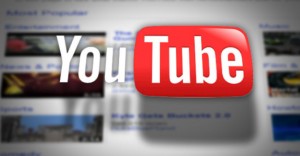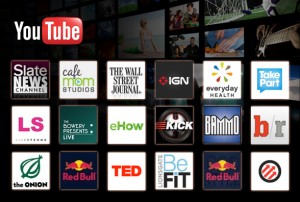 About this time last year I was writing about the top secret plan from Google that was going to cost $150m dollars, start up something like 25 new high-end YouTube channels, upset Cable providers, and generally mark a great leap for YouTube as a driver of content. A year later we’ve found that with marketing that number ballooned to $350m, the number of channels created is closer to 100, and yet the impact has been relatively measured.
About this time last year I was writing about the top secret plan from Google that was going to cost $150m dollars, start up something like 25 new high-end YouTube channels, upset Cable providers, and generally mark a great leap for YouTube as a driver of content. A year later we’ve found that with marketing that number ballooned to $350m, the number of channels created is closer to 100, and yet the impact has been relatively measured.
That said, you may have noticed someone like Jay-Z pushing more online video, or perhaps The Onion having a bigger video presence on the web, or the creation/growth of all sorts of new channels like Nerdist and Machinima. That’s all a result of this deal, and now we learn that the second year will bring great changes.
First off is the rather nasty-sounding statistic that it will be 40% of content partners that get renewed contracts with YouTube, which include production funds, promotion, and guaranteed revenue. Obviously that means over half of their original contracts will expire without renewal- is that a terrible number?
Not necessarily.
As recently as October the big G was announcing many more deals with the guy in charge –Robert Kyncl– suggesting that multi-year contracts are on the horizon for some channels. This all suggests that this experiment is working as any massive media project of its kind would- lots of experimentation with a quick strike to distill the brands down to what’s working well. With all that in mind, 40% doesn’t seem like such a terrible number.
 The real sign that there remains potential is that YouTube is pressing on, signing more deals, spending more money, and expanding this to other markets across the globe. Google is not a company unwilling to shutter a project that’s not working, and this is an arena in which there is too much at stake to not push hard to make something work. Kyncl has suggested that over the last year they’ve confirmed their instinct that creating great content or even driving huge traffic on certain videos or whole channels is not nearly as difficult cultivating consistent audiences. Consider the last year and how The Onion, Nerdist, Michinima, along with perhaps Vice or My Damn Channell may have slowly, inconsistently crept into your online viewing habits. From my seat I’ve definitely felt the presence of these entities slowly grow, suggesting that $200m in marketing and $150m in production has gone somewhere at least.
The real sign that there remains potential is that YouTube is pressing on, signing more deals, spending more money, and expanding this to other markets across the globe. Google is not a company unwilling to shutter a project that’s not working, and this is an arena in which there is too much at stake to not push hard to make something work. Kyncl has suggested that over the last year they’ve confirmed their instinct that creating great content or even driving huge traffic on certain videos or whole channels is not nearly as difficult cultivating consistent audiences. Consider the last year and how The Onion, Nerdist, Michinima, along with perhaps Vice or My Damn Channell may have slowly, inconsistently crept into your online viewing habits. From my seat I’ve definitely felt the presence of these entities slowly grow, suggesting that $200m in marketing and $150m in production has gone somewhere at least.
This is all still rather nebulous, though you can check out a sort of “ratings” chart over at Deadline for last weeks YouTube channel video views. This chart is purely based on views, so you’re not getting the fully accurate, complex picture of how a content channel is engaging an audience, pulling in advertising revenue, etc., but you can at least wrap your head around some numbers and how competitive this theater of media war has already become.
Source | All Things HD (via No Film School)